Shirataki Noodles for Keto: Nutrition & Benefits
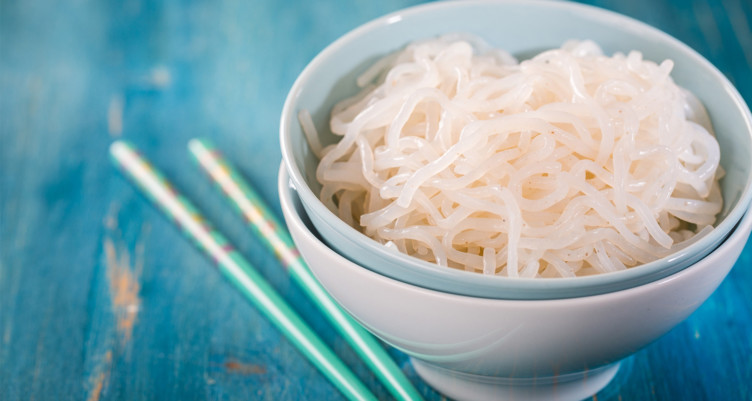
- Shirataki noodles are a keto-friendly pasta alternative that are virtually carb- and calorie-free.
- As their popularity grows, these low-carb noodles are becoming easier to find. You can usually buy shirataki noodles at your local grocery store, Whole Foods or even Amazon or Walmart.
- These noodles are easy to prep and take on the flavors of whatever ingredients you choose to combine them with. Try them in one of our Bulletproof-backed recipes for a delicious, low-carb dinner or lunch!
Just because you’re gluten-free, keto or grain-free doesn’t mean pasta is off the table. Meet shirataki noodles, the zero-calorie, low-carb noodle that’s about to change your life.
Popular in Japanese cuisine for centuries, they are exploding on the health food scene as a keto-friendly pasta alternative, and with good reason—they contain nearly zero carbs and satisfy cravings without the usual spike and crash.
Shirataki noodles are keto-approved, vegan and naturally gluten-free. Read on to learn more about these “miracle” noodles, including nutrition, benefits and where to buy them.
What are shirataki noodles?
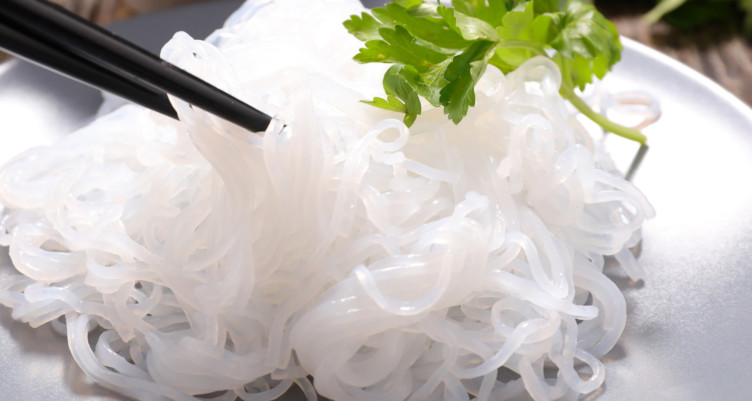 What are shirataki noodles made from? This keto-friendly food is created using the Japanese konjac yam (also known as devil’s tongue or elephant yam). These translucent, gelatinous noodles consist almost entirely of water and glucomannan fiber (a viscous, soluble dietary fiber). This means they are practically calorie- and carb-free, so you can absolutely enjoy shirataki noodles on keto.
What are shirataki noodles made from? This keto-friendly food is created using the Japanese konjac yam (also known as devil’s tongue or elephant yam). These translucent, gelatinous noodles consist almost entirely of water and glucomannan fiber (a viscous, soluble dietary fiber). This means they are practically calorie- and carb-free, so you can absolutely enjoy shirataki noodles on keto.
Unlike other low-carb pasta options, like spaghetti squash or zoodles (what the cool kids call spiralized zucchini), shirataki noodles take just a few minutes to prep, straight out of the bag.
Shirataki noodles are chewy and feel incredibly similar to rice noodles. They soak up whatever flavors you cook them with, making them an excellent base for a variety of keto pasta dishes.
Other names for shirataki noodles
Don’t be surprised if you see shirataki noodles referred to by different names. If any of the following terms are used, rest assured we’re talking about shirataki:
- Ito konnyaku
- Konjac yam noodles
- Miracle noodles
- Devil’s tongue noodles
How to cook shirataki noodles
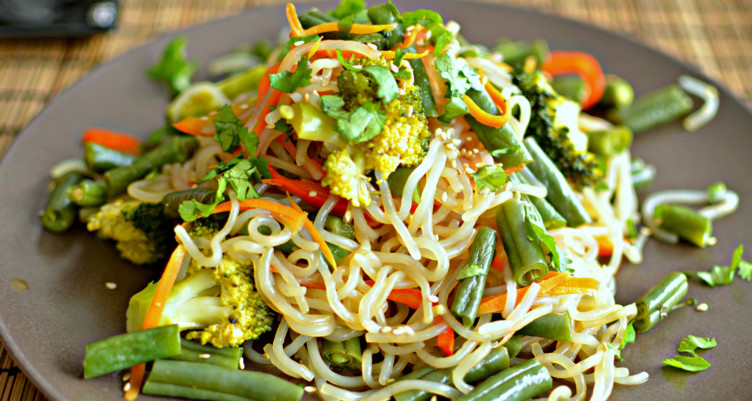 While zoodling your veggies can make for delicious, nutrient-dense pasta, some days you just want the ease of tossing some noodles in a pan, ready to go. If you’re wondering how to make shirataki noodles, don’t worry—they’re about as easy as it gets.
While zoodling your veggies can make for delicious, nutrient-dense pasta, some days you just want the ease of tossing some noodles in a pan, ready to go. If you’re wondering how to make shirataki noodles, don’t worry—they’re about as easy as it gets.
When preparing these keto-friendly noodles, you will likely notice an odd or fishy odor when you first open your package of noodles. Fear not, the noodles themselves are tasteless, and some quick but essential prep work will take care of the odor:
- The noodles come packaged in water, so first drain and rinse them thoroughly with clean water in a colander.
- Start some water at a low boil, and toss the rinsed noodles in for just 2-3 minutes. Rinsing and boiling the noodles will take care of the fishy smell and improve their consistency.
- After that, dry roast the noodles in a pan with no oil for about a minute to heat off the extra water and give them more of a traditional pasta mouth-feel.
- When you make shirataki noodles at home, they’ll take on the flavor of whatever you mix them with, so have some fun experimenting in the kitchen. Toss them with the sauce and toppings of your choice. There are a ton of shirataki noodle recipes out there that can serve as a starting point for you to expand off of.
Related: You Can Zoodle Everything: 30 Spiralizer Recipes for Paleo & Low-Carb Pasta
Shirataki noodles nutrition facts
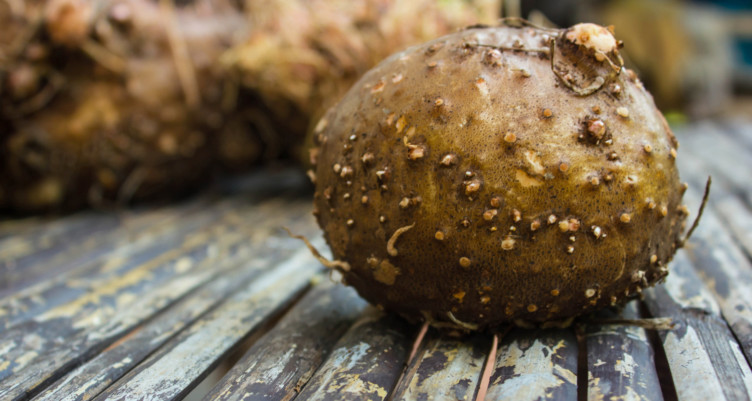 As far as food labels are concerned, shirataki noodle nutrition facts are fairly straightforward. After all, traditional shirataki noodles are made entirely from water and fiber from the konjac yam (plus a little lime to help the fiber stay solid), so you won’t have much to read through.
As far as food labels are concerned, shirataki noodle nutrition facts are fairly straightforward. After all, traditional shirataki noodles are made entirely from water and fiber from the konjac yam (plus a little lime to help the fiber stay solid), so you won’t have much to read through.
This fiber is called glucomannan, a soluble fiber that can help boost your digestion and curb hunger. Glucomannan is available as a health supplement, and studies back its potent ability to curb hunger hormones, fuel good gut bacteria as a prebiotic and keep you regular.[1][2]
The glucomannan fiber in shirataki noodles can also support weight management and boost your cardiovascular health by improving cholesterol and blood sugar.[3][4]
Shirataki noodles nutrition information
While there are typically plenty of carbs in noodles, shirataki have a much different nutritional profile. According to the USDA database, here’s what’s in a 100-gram serving:
- Calories: 9
- Protein: 0g
- Fat: 0g
- Carbohydrates: 2.68g
- Fiber: 2.7g
- Sugar: 0g
Calories in “miracle” noodles
Do shirataki noodles have any nutritional value? Because they contain only fiber and water, they are essentially a zero-calorie food, making them an excellent choice for most weight management diets—not just keto.
Depending on the brand, nutrition labels list between 10 to 20 calories per 100-gram serving (roughly 3 to 4 ounces). However, because shirataki noodle calories are virtually nonexistent, they are pretty much nutrient-free, too. (In fact, they’re about 97% water).
Without any of the micronutrients or phytochemicals found naturally in whole konjac, or other plant-based pasta, the nutrition content of shirataki pasta depends mainly on your toppings, so be sure to supplement your dish with healthy fats, quality meat and plenty of veggies.
What about carbs?
Like calories, shirataki noodle carbs are also pretty much non-existent. A 3-ounce serving of shirataki noodles contains just 2 grams of total carbohydrates.[5] These carbohydrates are actually fiber, which your body can’t digest. If you’re calculating net carbs (and you should be counting carbs on keto), that means shirataki has 0 net carbs per serving.
Heads up for the Bulletproof Diet: As shirataki noodles gain popularity, some brands are starting to add tofu to the noodles to create a more traditional grain-based pasta texture. Tofu is a processed form of soybeans, and soy is not Bulletproof.
Potential side effects
While allergy issues aren’t particularly prevalent with shirataki noodles, there are potential side effects to consuming them. Primarily, you could experience some minor bloating and gas due to their fiber content. If you’re not used to consuming fiber regularly, be mindful that your body may have difficulty digesting these low-carb noodles at first.
Where to buy shirataki noodles

While buying shirataki noodles used to mean shopping online or visiting your local Asian food market, their growing popularity means they are cropping up in grocery stores across the country.
If you’re searching for these zero-carb noodles, you can find them at a number of places, including:
- Walmart
- Whole Foods
- Regional supermarket chains
- Amazon
- Thrive
Shirataki noodle recipes
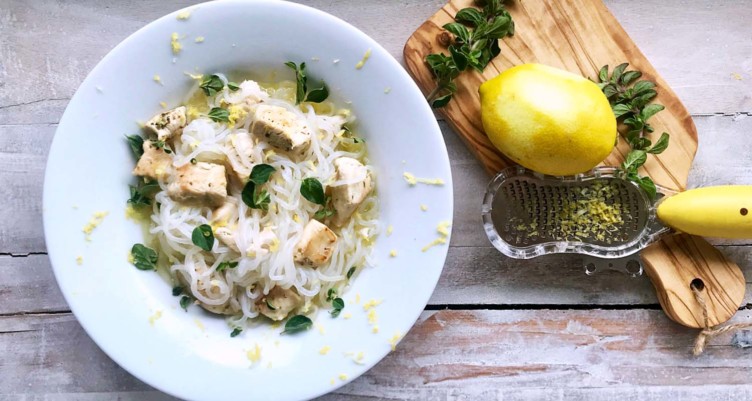
Shirataki noodles are one of those types of keto foods that give you the freedom to take things in any direction. Whether you want to replicate the flavors of your favorite pasta dish or you want to try something new entirely, here are some of our favorite recipes that are bound to tantalize your taste buds:
- Low-Carb Shrimp Pad Thai With Shirataki Noodles
- Low-Carb Angel Hair Pasta With Lemon Chicken
- Low-Carb Vegetarian Ramen
- Keto Shrimp Scampi
For easy, delicious ideas on how to prepare these versatile noodles, check out our list of keto-friendly shirataki noodle recipes, then hit the store to enjoy “pasta” again.
Sign up for early access to sales, product launches, the latest Bulletproof news and more!
This article has been updated with new content.



